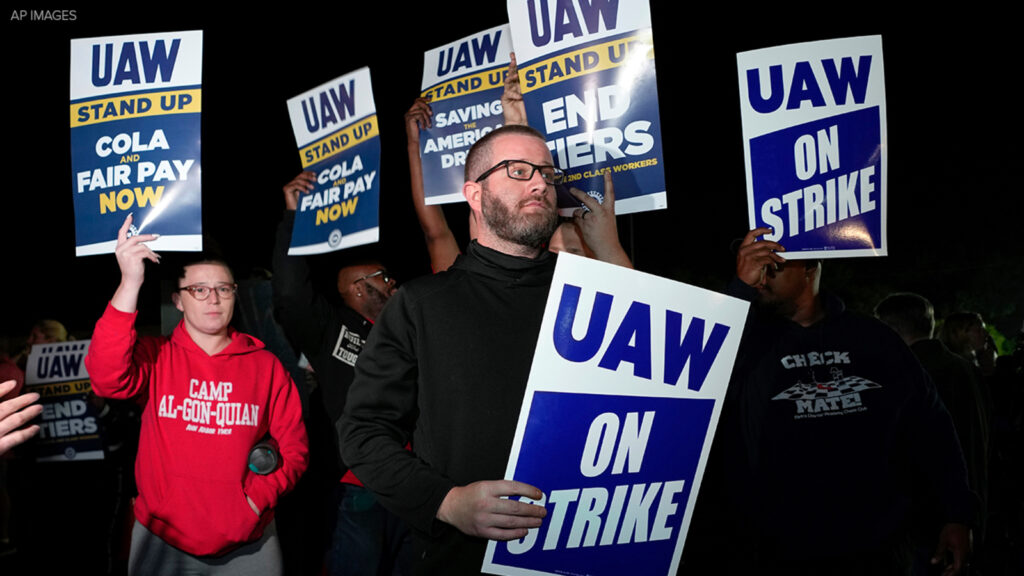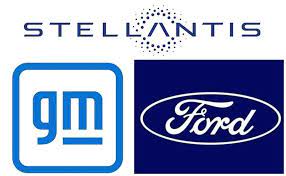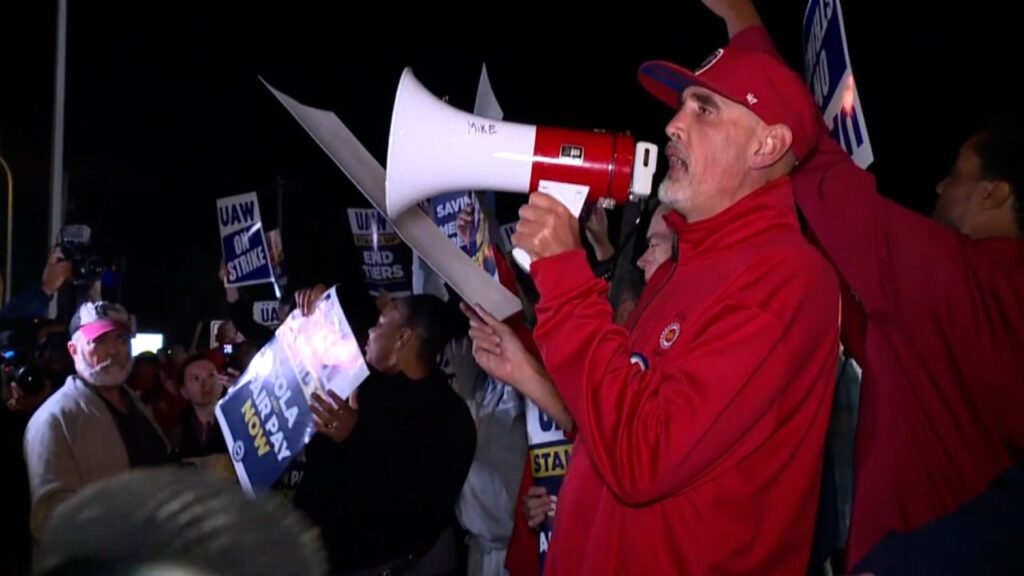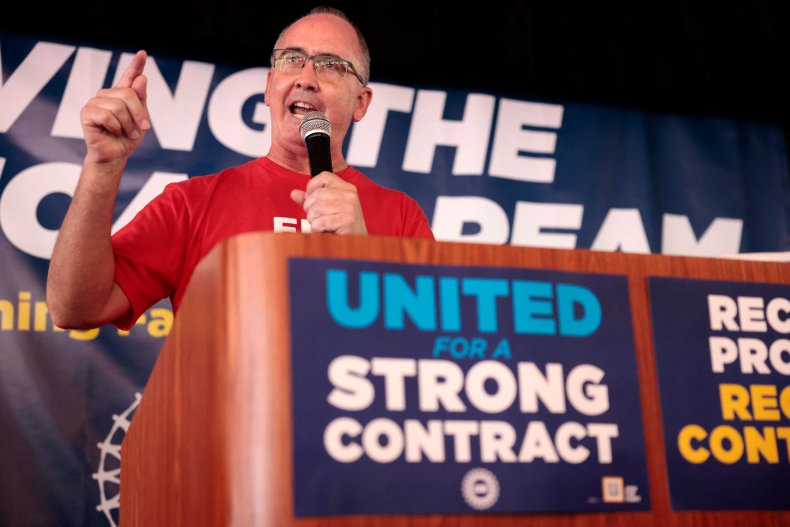Last Updated on: 17th September 2023, 02:41 am

1.Reason Behind the UAW Strike for 3 Big Automobile Maker from US.

The UAW strike unfolded because the union had some big requests on the table. They were pushing for better wages, improved benefits, and stronger job security for their members. It’s important to note that all three major automakers had been raking in enormous profits or coming very close to it. In a way, the union was trying to regain some of the perks that had been taken away over a decade ago when these companies were struggling to stay afloat and almost went under.
2.The UAW Strike Might Affect the Automobile Industry.

“In the initial stages of a strike, your typical car shopping experience won’t see much of a shakeup. Whether you’re eyeing a Ford, GM, or Stellantis vehicle, the dealerships will keep their doors open. That’s because these dealerships are independently-owned franchises, separate from the auto giants themselves.
Most of these dealerships are well-prepared, with a good stockpile of both new and used cars ready to roll. Scott Kunes, the chief operating officer of Kunes Auto and RV Group, which boasts over 40 dealerships in the Midwest, gave us the inside scoop: ‘We’ve been smart about it. We’ve loaded up on used cars, especially those domestic brands and the hot sellers.’
However, if this strike becomes a marathon rather than a sprint, you might start noticing a difference in prices. Tyson Jominy, the industry analyst at JD Power, predicts that prolonged UAW strikes could nudge those prices northward.
Now, here’s where the production puzzle comes into play. In plants where workers aren’t part of the UAW strike, things can hum along smoothly for a while. Well, at least until they run out of the parts they’ve got in stock. This goes for GM, Ford, and Stellantis factories in Canada and Mexico as well. They can keep the wheels turning for some time.
But eventually, there’s a hiccup. You see, these factories depend on major components coming from U.S. plants that are currently closed due to the strike, as explained by Thomas Goldsby, a supply chain management professor at the University of Tennessee.
Now, don’t expect prices to skyrocket like they did during the infamous computer chip shortages in the midst of the pandemic. But, in the worst-case scenario, they might come a little too close for comfort ON UAW Strike..
3. Demand of Workers.

Rather than casting a wide net, the UAW focused its efforts on a select group of factories, kind of like shining a spotlight on the negotiation stage. You see, the union had some pretty bold asks, like wanting to see wages go up by a whopping 36% over the next four years. GM and Ford, however, came forward with offers that were a bit more conservative, pitching a 20% increase. Meanwhile, Stellantis, which used to go by Fiat Chrysler, put forth an offer at 17.5%. So, it’s like a tug-of-war between the union’s ambitions and what the companies were willing to give.
4. How Three big Automaker Facing UAW Strike.

“In the ongoing labor tango between the United Auto Workers and the Big Three U.S. automakers ON UAW Strike, you’ll find some classic dance moves: pay raises, sick days, and pay scales, all of which are familiar steps in the negotiation waltz.
But if you peek backstage, you’ll spot a game-changer—the transition from traditional gas-guzzlers to electric vehicles (EVs). It’s like the auto industry’s blockbuster sequel, and it’s not just a footnote; it’s practically a whole new script with significant implications for both the business and its workforce.
To put things in perspective, in 2022, U.S. automakers cruised past the 14 million mark in new car and truck sales. But here’s the plot twist: for the first time ever, over 1 million of those vehicles were hybrids or all-electric. Yep, the green machines are making their debut on the big stage.
Now, that’s definitely a milestone, but it’s important to remember we’re still in the opening scenes of this EV epic. Buckle up, folks; it’s going to be one electrifying ride.
5. What Leaders Say On UAW Strike.

Former United Auto Workers union President Bob King told about Uaw Strike Thursday night that membership delivered the Big Three automakers a message.
“I hope that the companies are listening to them and give them a better offer than what they have so far,” King said. “The companies have made a lot of brinkmanship bargaining rather than good-faith bargaining …. and they would never, ever get ratified by the membership for End up the UAW Strike.”
King was president of the UAW from 2010 to 2014 and did not organize a strike during his tenure as the union leader. He told Coates that the company’s criticism of Fain is misplaced, because he is representing the will of 145,000 autoworkers who voted overwhelmingly to authorize a strike.
“They’re voicing their concerns and frustrations,” King said. “These companies made $250 billion in the last 10 years only because of our sacrifices.”
“To me, it’s a tremendous level of injustice,” he added.
6. Conclision.
The Ford plant that’s on strike employs about 3,300 workers, and it makes Bronco SUVs and Ranger midsize pickup trucks. The Toledo Jeep complex has about 5,800 workers and manufactures the Jeep Wrangler SUV and Gladiator pickup. GM’s Wentzville plant has about 3,600 workers and makes the GMC Canyon and Chevrolet Colorado midsize pickups, as well as the GMC Savana and Chevrolet Express full-size vans.
The union didn’t go after the companies’ big cash cows, which are full-size pickup trucks and big SUVs, and went more for plants that make vehicles with lower profit margins, said Marick Masters, a business professor at Wayne State University in Detroit.
“They want to give the companies some space without putting them up against the wall,” Masters said. “They’re not putting them right into the corner. You put an animal in the corner and it’s dangerous.”
Automakers say they’re facing unprecedented demands as they develop and build new electric vehicles while at the same time making gas-powered cars, SUVs and trucks to pay the bills. They’re worried labor costs will rise so much that they’ll have to price their cars above those sold by foreign automakers with U.S. factories.
GM CEO Mary Barra told workers in a letter Thursday that the company is offering historic wage increases and new vehicle commitments at U.S. factories. GM’s offer, she wrote, “addresses what you’ve told us is most important to you, in spite of the heated rhetoric from UAW leadership.”
On CNBC Thursday, Ford CEO Jim Farley said if Ford had agreed to the union’s demands, it would have lost $15 billion during the last decade and gone bankrupt.
Under the UAW strategy, workers who go on strike would live on $500 per week in strike pay from the union, while others would stay on the job at full pay. It’s unlikely the companies would lock the remaining workers out of their factories because they want to keep building vehicles.
It’s tough to say just how long it will take for the strikes to cut inventories at dealers and start hurting the companies’ bottom lines.
Jeff Schuster, head of automotive for the Global Data research firm, said Stellantis has the most inventory and could hold out longer. The company has enough vehicles at or en route to dealers to last for 75 days. Ford has a 62-day supply and GM has 51.
Still, Schuster predicted the strikes could last longer than previous work stoppages such as a 40-day strike against GM in 2019.
“This one feels like there’s a lot more at risk here on both sides,” he said.